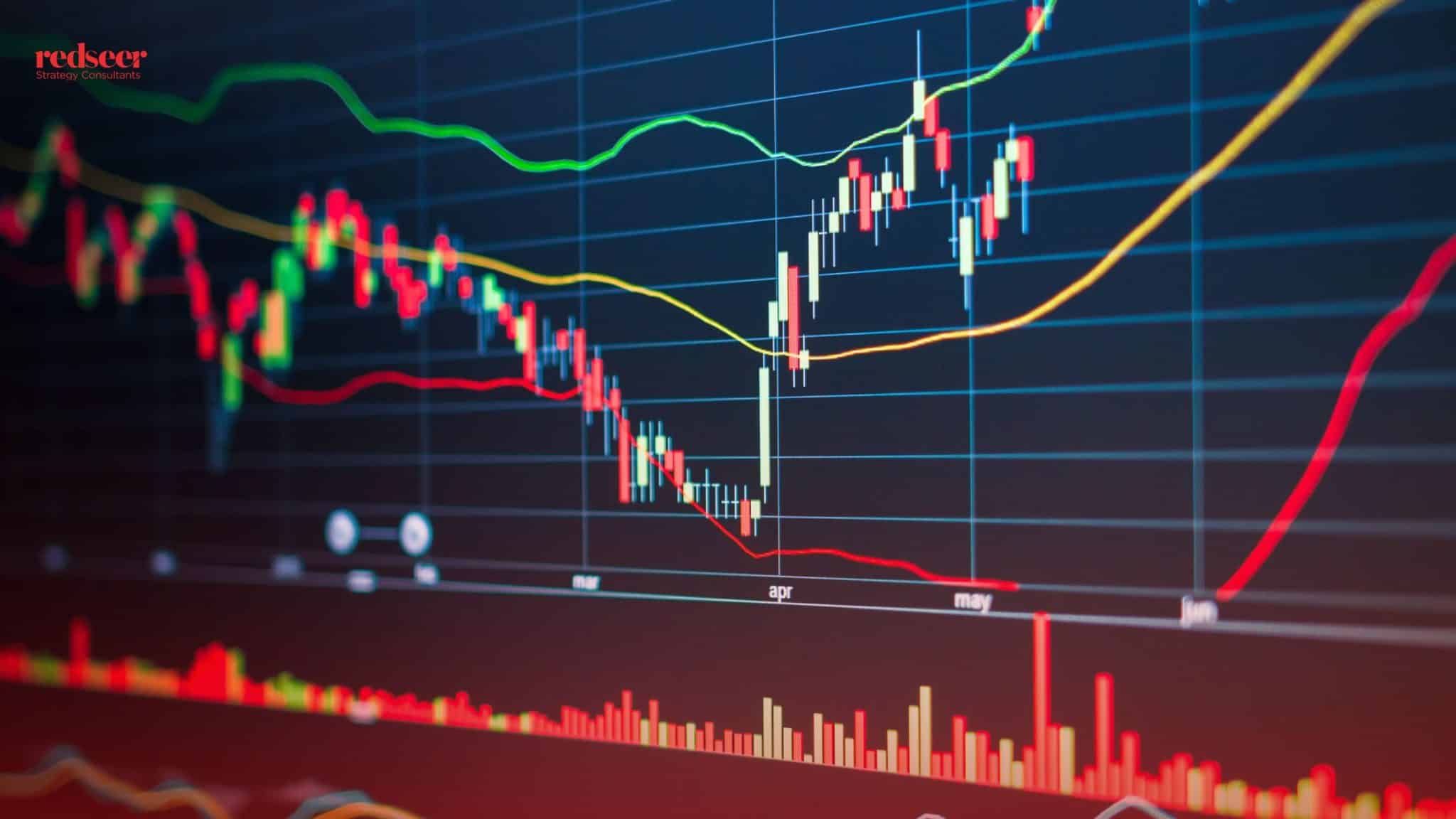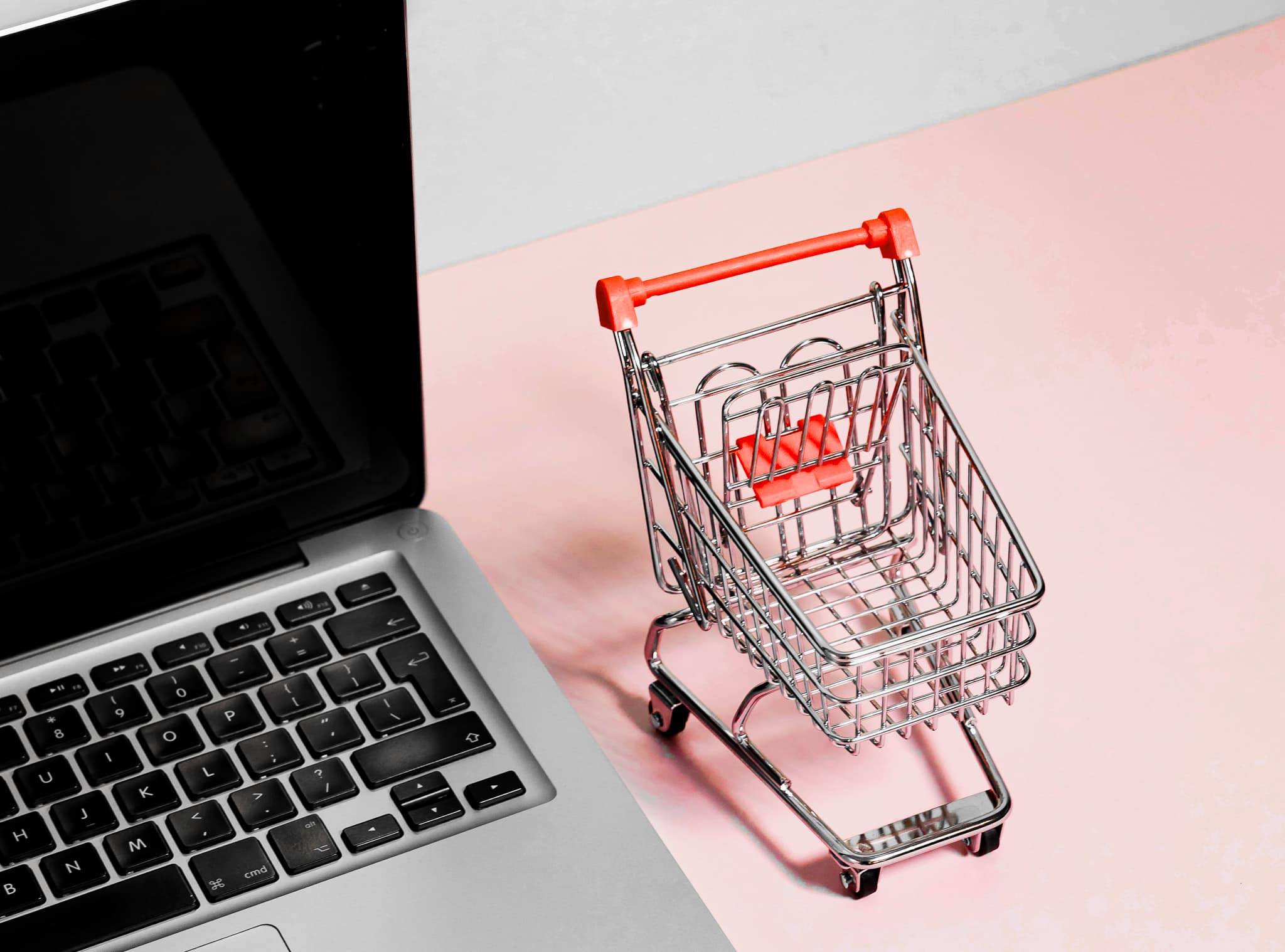For a long time, businesses have relied on paper-based payments such as cash and cheque. Even front-runners of digital payments adopters, large corporations employed legacy enterprise systems which seldom offered end-to-end automation. Traditional B2B enterprise payment system offerings (legacy systems) are either manual, or some part of the payment process is automated. They require businesses to buy and maintain IT infrastructure and systems leading to operational inefficiency and increasing maintenance costs. Here, my colleague Mrigank Gutugutia has shared insights into how the digital b2b payment system is trying to solve the problem and why their adoption is bound to happen.
1. Legacy Enterprises and MSMEs B2B payment workflows are manually intensive, complicated and inefficient
The traditional system of B2B payments has the disadvantages of a lot of paperwork due to nonstandardized invoices and tedious data entry, which are manual and prone to errors. In addition, gathering approvals from several departments for invoice payments post-accounting is cumbersome and time-consuming.

2. Still largely relying on cash & cheque, accounting for 50% – 60% B2B payments today
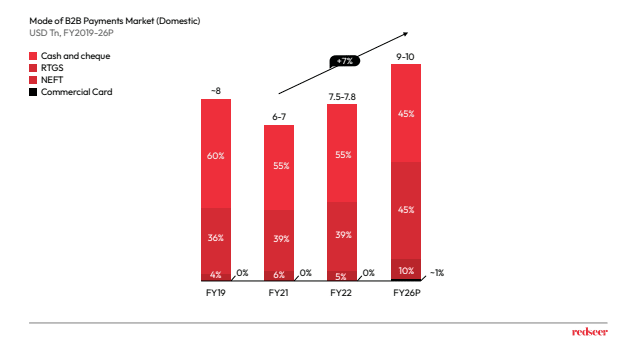
India’s B2B payments market is poised to grow from USD 7.6-8.0 trillion in Fiscal 2022 to USD 10-11 trillion in Fiscal 2026. In Fiscal 2022, cross-border payments contributed 5% of the total B2B payments. In line with the global trends, India’s B2B transactions involve most cash and cheque, contributing to 55% of domestic B2B payments in Fiscal 2022. As a result, it is expected that domestic B2B payments in India will increase from USD7.5-7.8 trillion in Fiscal 2022 to USD 9-10 trillion in Fiscal 2026, with commercial credit cards increasing their share to 0.6% in Fiscal 2026.
3. Digital B2B payment solutions are transforming manually intensive, complicated payment flows in enterprises
B2B payment automation helps businesses get rid of paperwork by digitalizing purchase orders and invoices. This leads to faster verification, shorter turnaround time, less effort in generating orders and invoices, and approval of payment. Data entry processes get automated, and platforms perform analytics to facilitate supplier management, automating process workflows, account reconciliation and verification. Cloud-based B2B payment systems are more cost-effective, easier to maintain and seamlessly integrate with underlying ERP and automate process flows end-to-end. Moreover, SaaS solutions have the agility to be scalable and suit the needs of a fast-changing business. Owing to the benefits of interoperability and affordability of cloud solutions globally and in India, there is a shift from paper to a paperless mode of payments not just in the vendor-distributor network but also for other payments such as employee benefits, tax payments and utility payments.
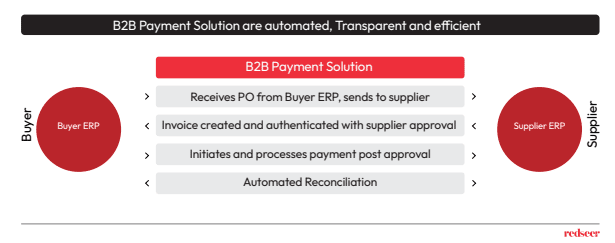
4. Government is also encouraging digital B2B payments and fintech solutions in an otherwise cash and cheque-dominated landscape
Along with RBI, the government of India has also taken initiatives to boost the growth of B2B fintech
players. In May 2020, the government exempted businesses from the mandatory use of e-payments facilities such as RuPay and UPI. Previously, businesses failing to comply were required to pay ₹5,000 per day as a penalty. To promote the adoption of B2B payment, in September 2020, the UPI steering committee endorsed UPI B2B transactions as a separate category within the UPI ecosystem, which enables instant B2B transfer of money from one bank account to another via mobile phones. In addition, the government e-marketplace (GeM) is a one-stop portal that helps facilitate procurement required by various government departments also, helps government departments get products at the best value, and facilitates demand aggregation along with several other tools like e-bidding and reverse auction.
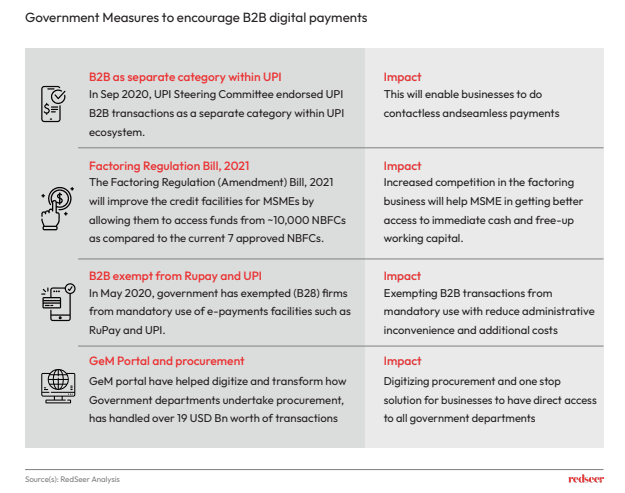
5. Given low penetration and government support to push B2B payments mainstream, category is expected to become ~$11 trillion market by 2025.
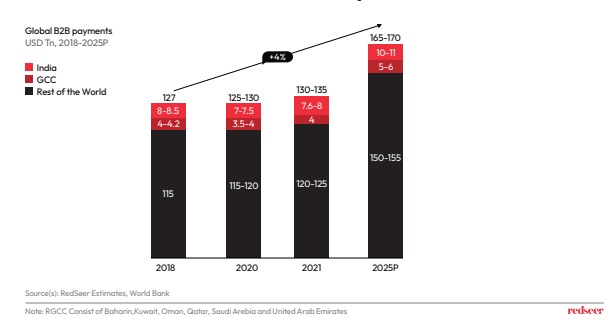
In 2021, India and GCC countries constituted 9% of the global B2B payments market and provided a vast market opportunity for B2B payment players. The B2B payments market across these two geographies is expected to grow to around USD17 trillion by 2025. Demonetization, a government push for digitization and technological adoption are the key drivers for India’s B2B payments growth. The global commercial payments volume was estimated at approximately USD 130-135 trillion in 2021. Our report estimates that India has approximately USD 8 trillion of the global commercial payments volume, CEMEA, approximately USD 10 trillion and Asia-Pacific is estimated at approximately USD 58 trillion.



